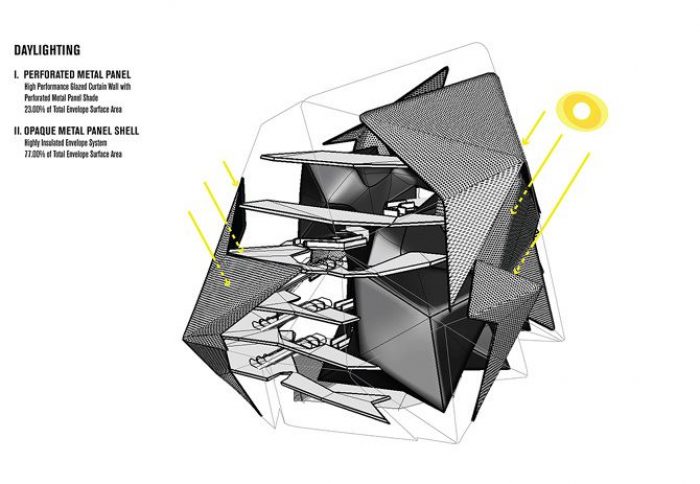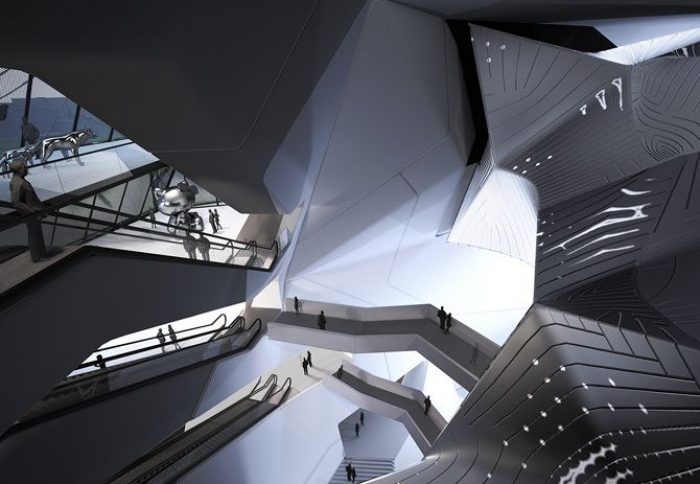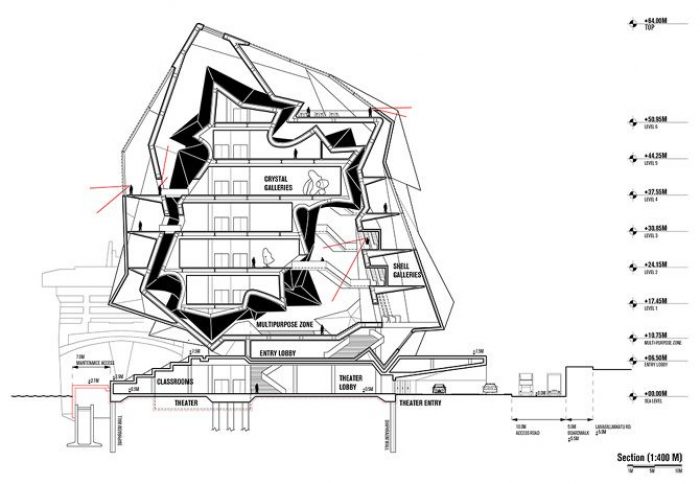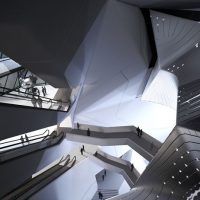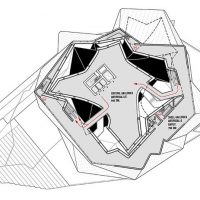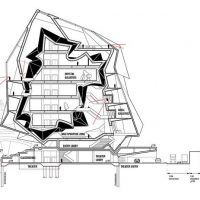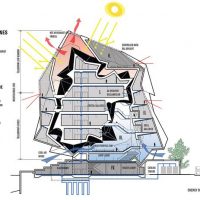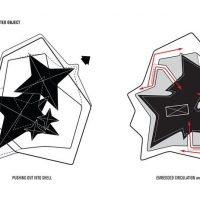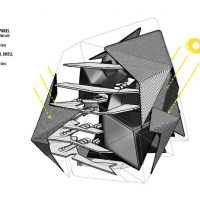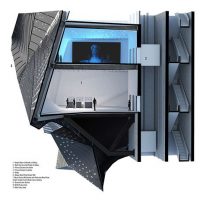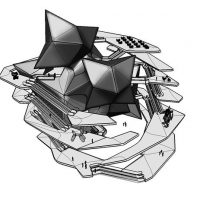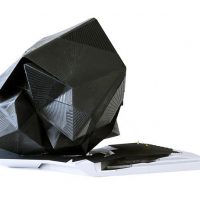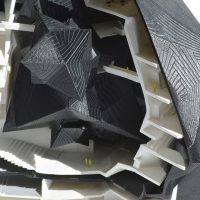Making your proposal shine among 1,715 proposals is either hard labor, a lot of intelligence, or a glimpse of both. The combination is exactly what Tom Wiscombe Architecture did for their Guggenheim Helsinki’s proposal. The firm presents an approach of a deregulated form, far distinct from its opponents’, and far involved in the surrounding culture and the appreciation of art.
The form is the architectural equivalent of two crystal shapes that collide into a composite form, having a very fragile relationship with a lower building seamlessly integrated with the ground. The firm argues that this gives the looks of “movability” to the building. With steel covering the exterior of the two alleged crystals, the building certainly provides a vivid contrast with its surrounding.
Located within the two masses are the crystal galleries, the multipurpose space, and the smaller galleries, all stacked up making one unique architectural “nest”. The architect explains “As visitors circulate, they find themselves momentarily suspended above a deep, almost geological chasm. Rather than experiencing a fluid continuum of art, visitors experience this museum as a set of discrete experiences or leaps between realities.”
The proposal is another representation of Wiscombe’s unorthodox line of design, merging digitalization, smooth lines, curves, and geometrical anatomy effortlessly into his works. The merger is presented in a deconstructive method that maintains the strong relationship between the design and the artistic general context of the era.
The design reflects a depth that is rooted in the culture of the context. The architect clarifies saying: “This design is based on establishing vicarious relations to the local context of Helsinki, and to the constellation of other Guggenheim Museums around the world, while at the same time withdrawing from those contexts. This withdrawal is intended to incite and co found speculation as to the building’s origins, and create a sense of mysterious depth beyond its superficial qualities.”
It is worth mentioning that many contemporary architecture critics aptly recognized the Guggenheim Helsinki’s Competition as the competition of the era. With more than 1,700 participants, and no more than six finalists to compete on the winning of the competition by the end of spring, the announcement of the final result is highly anticipated.
By: Hazem Raad
- courtesy of Tom Wiscombe
- courtesy of Tom Wiscombe
- courtesy of Tom Wiscombe
- courtesy of Tom Wiscombe-plan
- courtesy of Tom Wiscombe-section
- courtesy of Tom Wiscombe
- courtesy of Tom Wiscombe
- courtesy of Tom Wiscombe
- courtesy of Tom Wiscombe
- courtesy of Tom Wiscombe
- courtesy of Tom Wiscombe
- courtesy of Tom Wiscombe
- courtesy of Tom Wiscombe
- courtesy of Tom Wiscombe


